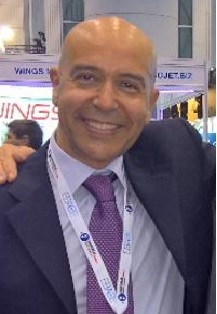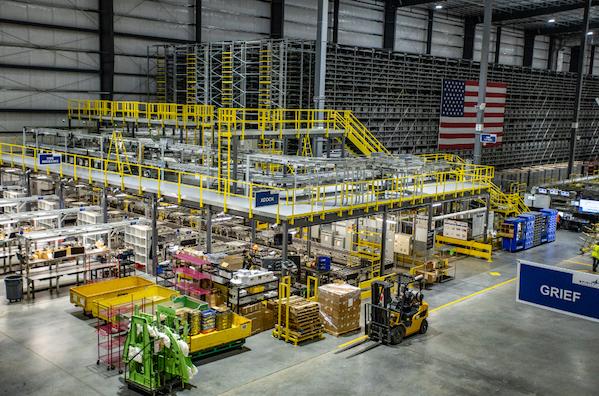Spirit Aero Lauds New Supply-Chain Visibility System
Details
More Products & Services
Products & Services
Home - Aviation Group Marketing
Aviation Week Network
120 data points on over 156,000 commercial and business aviation aircraft, including military transports. Discover the most trustworthy resource for the complete aircraft history, plus ad hoc reports, month-over-month trend analysis and details on expected deliveries through 2050.
Aerospace | Aviation Week Network
Aviation Week Network
https://aviationweek.com/themes/custom/particle/dist/app-drupal/assets/awn-logo.svg
People

Andrea Rossi Prudente
Aviation Week Network

Anthony Lim
Aviation Week Network
Sales director

Becca Balmes
Aviation Week Network

Belinda Tan
Aviation Week Network

Brian Everstine
Aviation Week Network
Editor

Eddie Krankowski
Aviation Week Network
Assistant Manager, Tradeshows

erving dockery
Aviation Week Network

Lisa Tan
Aviation Week Network
Senior Marketing Manager

Mark Thomas
Aviation Week Network
Description
PARIS—Spirit AeroSystems is rolling out a supply-chain visibility system to its suppliers with an eye on mitigating potential disruptions before they lead to delays.
The new system, generically termed a digital "control tower," automatically provides key updates on a part or subassembly's progress in Spirit's supply chain, the company's chief procurement officer Alan Young tells ShowNews ahead of the Paris Air Show.
"I would hope to have a significant proportion of our supply chain on this and using it by the end of the year, if not sooner," Young says.
Work on the system began internally about 18 months ago. Then Spirit discovered and adopted a similar product by Robot Morning, which lists Collins Aerospace, GE Aviation Systems, Moller Aerospace, Pratt & Whitney and Rolls-Royce among its customers.
Spirit's goal: use control tower to monitor its incoming parts flow with an emphasis on flagging potential disruptions, not simply knowing when parts are slated to arrive.
"Before, you cut a purchase order and you get an acknowledgement it was received," Young says. "Really the next automated thing that happens is we get an ASN, or an advanced shipping notice, telling us the part is coming. Everything in between is manual—it's verbal conversations."
That process works fine until the ASN does not arrive as expected. Control tower provides updates at key milestones, starting with the downstream supplier's procurement progress.
"You're able in control tower to see, 'Hey, did you receive the material you needed? Have you loaded it on the machine? Have you cut chips?' You're able to digitally check the progress of that order very, very efficiently," Young says.
The earlier Spirit knows of issues, the more likely it can help mitigate a bottleneck.
"If a supplier calls me and says, 'Hey, I'm due to start tomorrow, and I don't have raw material,' I'm very capable of helping with that and still keeping the schedule intact," Young says.
Factor in Spirit's extensive fabrication capabilities, and the company can sometimes step in and make a part when necessary to fill a gap when a supplier misses a beat. The goal is to avoid such "blue streak" work as much as possible, however, as it is expensive.
Spirit has about 600 suppliers, but some may not end up connected via control tower, Young adds.
"The top 60 or 70 suppliers are 80% of the value," he continues. "Of course, when you're building an airplane, you need all the parts, not just the expensive ones, so that's when you've got to manage all 600. Some of those [companies] have very proprietary processes and deliver one or two parts. We may or may not go and make that investment at the tail of the supply chain," Young says.
For the companies that are connected, Spirit expects to reap immediate and significantbenefits.
"The digitization of the relationship and early identification of constraints are two massive things that I think will transform customer-supplier relationships," Young says.
The new system, generically termed a digital "control tower," automatically provides key updates on a part or subassembly's progress in Spirit's supply chain, the company's chief procurement officer Alan Young tells ShowNews ahead of the Paris Air Show.
"I would hope to have a significant proportion of our supply chain on this and using it by the end of the year, if not sooner," Young says.
Work on the system began internally about 18 months ago. Then Spirit discovered and adopted a similar product by Robot Morning, which lists Collins Aerospace, GE Aviation Systems, Moller Aerospace, Pratt & Whitney and Rolls-Royce among its customers.
Spirit's goal: use control tower to monitor its incoming parts flow with an emphasis on flagging potential disruptions, not simply knowing when parts are slated to arrive.
"Before, you cut a purchase order and you get an acknowledgement it was received," Young says. "Really the next automated thing that happens is we get an ASN, or an advanced shipping notice, telling us the part is coming. Everything in between is manual—it's verbal conversations."
That process works fine until the ASN does not arrive as expected. Control tower provides updates at key milestones, starting with the downstream supplier's procurement progress.
"You're able in control tower to see, 'Hey, did you receive the material you needed? Have you loaded it on the machine? Have you cut chips?' You're able to digitally check the progress of that order very, very efficiently," Young says.
The earlier Spirit knows of issues, the more likely it can help mitigate a bottleneck.
"If a supplier calls me and says, 'Hey, I'm due to start tomorrow, and I don't have raw material,' I'm very capable of helping with that and still keeping the schedule intact," Young says.
Factor in Spirit's extensive fabrication capabilities, and the company can sometimes step in and make a part when necessary to fill a gap when a supplier misses a beat. The goal is to avoid such "blue streak" work as much as possible, however, as it is expensive.
Spirit has about 600 suppliers, but some may not end up connected via control tower, Young adds.
"The top 60 or 70 suppliers are 80% of the value," he continues. "Of course, when you're building an airplane, you need all the parts, not just the expensive ones, so that's when you've got to manage all 600. Some of those [companies] have very proprietary processes and deliver one or two parts. We may or may not go and make that investment at the tail of the supply chain," Young says.
For the companies that are connected, Spirit expects to reap immediate and significantbenefits.
"The digitization of the relationship and early identification of constraints are two massive things that I think will transform customer-supplier relationships," Young says.

Share
Recent Chats
Share via email
Future: handle WhatsApp here
Future: handle LinkedIn here
Future: handle Twitter here
SUBMENU HERE
Share via Chat
Copy Link

